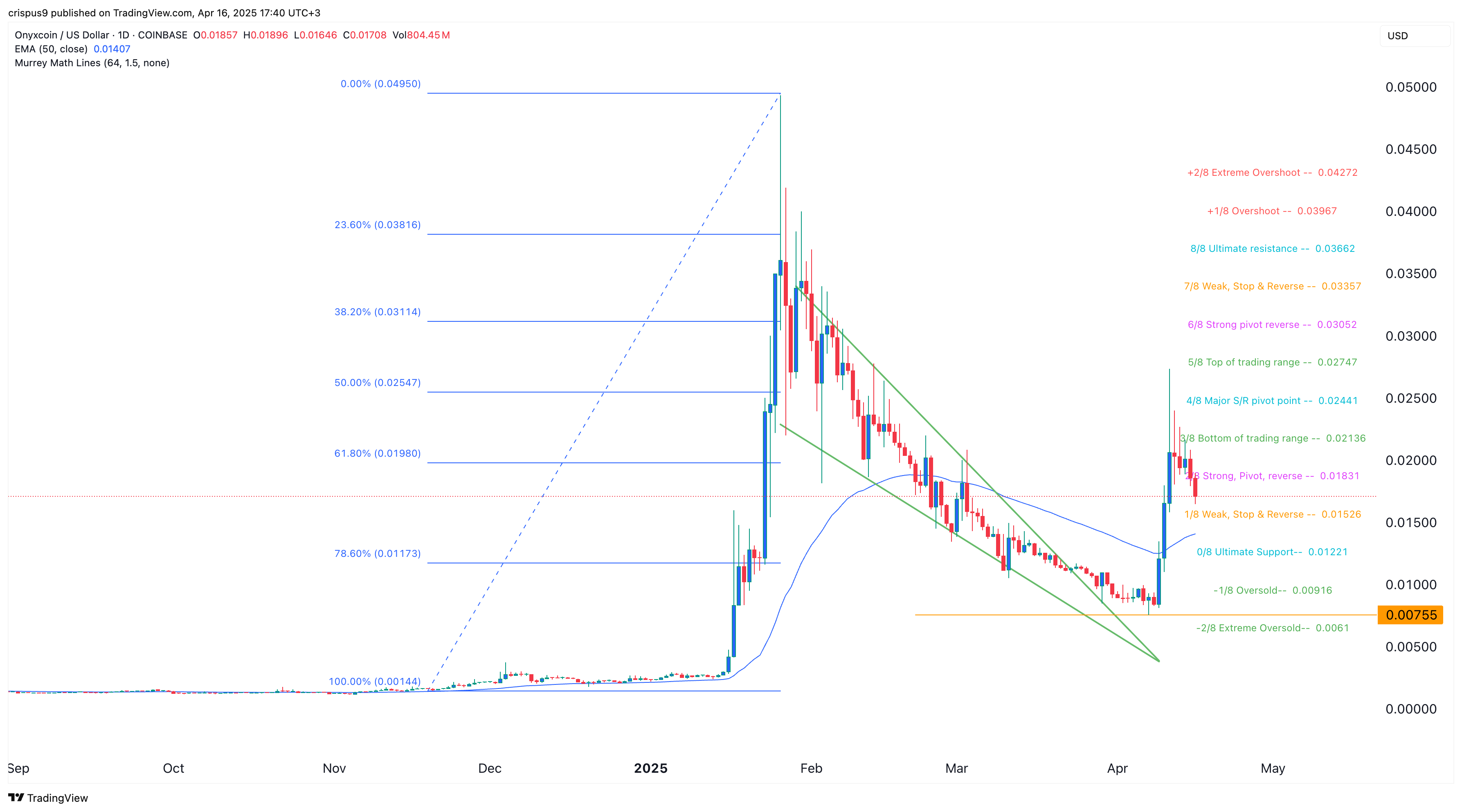
Onyxcoin token has given back some of the gains made last week as investors book profits and wait for the next catalyst.
Onyxcoin (XCN) price dropped to a low of $0.0170 on April 16, down by over 37% from its highest point this month.
持续下跌可能是由于投资者在币安合约上线该代币后抛售。从历史上看,加密货币通常会在大型交易所上线后上涨,然后在正式上线后回调。
Onyxcoin 的下跌也源于其网络自上周币安上市以来并未引起任何关注。因此,一些从此次上涨中获利的投资者开始获利了结。
XCN 的价格也随着其生态系统中锁定的总价值持续下降而下跌。数据显示,Onyx 目前的总资产仅为 123,990 美元,低于上周 146,000 美元的高点。这使得它在总资产超过 900 亿美元的 Layer 1 行业中显得微不足道。
Onyxcoin 的日交易量在过去几天也大幅下降。CoinMarketCap 数据显示,其交易量从上周的 6 亿美元下滑 30%,至 9300 万美元。大部分交易活动发生在 Coinbase、Bitget 和 MEXC 等交易所。

XCN 价格图表 | 来源:crypto.news
日线图显示,XCN 代币在上周飙升之前一直处于窄幅震荡,这表明其正处于威科夫理论的吸筹阶段。随后,XCN 进入上涨阶段,其特征是抛物线走势,并突破了 50% 斐波那契回撤位。
目前已进入派发阶段,其特点是供应大于需求。这种抛售压力通常来自于在价格上涨期间买入的恐慌性交易员。
Onyxcoin 也跌破了 Murrey 数学线的强枢轴反转点 0.0183 美元。因此,随着卖家瞄准本月低点 0.00755 美元(较当前水平下跌约 55%),该币种可能会继续下跌。
However, the risk of shorting XCN is that it often stages parabolic moves. For example, it soared by 150% in a 24-hour session in January. It also jumped by another 35% a few days later.